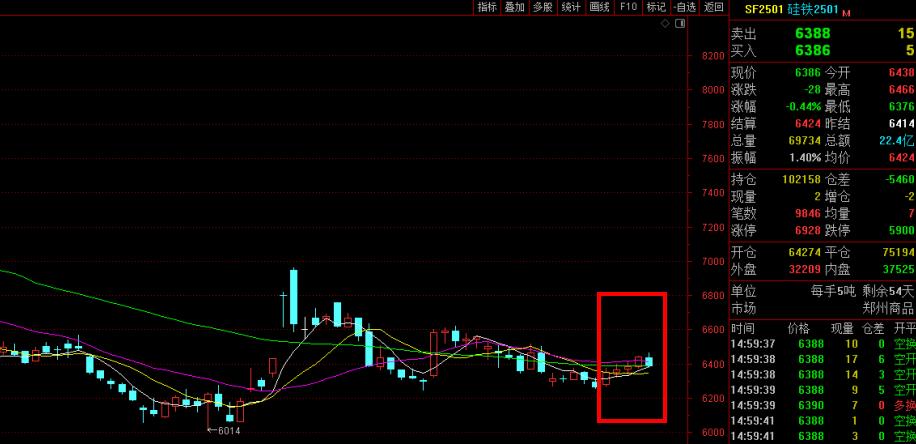[Ferro-Alloys.com] Consultation outcome Factsheet: UK Carbon Border Adjustment Mechanism
1. What is carbon leakage?
The UK is taking rapid action on industrial decarbonisation to meet net zero. This includes the use of carbon pricing through the UK Emissions Trading Scheme (UK ETS). This action creates risk of carbon leakage as not all jurisdictions are moving at the same pace.
Carbon leakage is the movement of production and associated emissions from one country to another due to different levels of decarbonisation effort through carbon pricing and climate regulation.
Carbon leakage can undermine efforts to reduce global emissions and curtail private investment in decarbonisation – compromising efforts to limit global warming to 1.5°C.
The best solution to carbon leakage is an international one. The UK and many others around the world are working to reduce carbon leakage risk by pushing for ambitious climate action. But progress on international solutions takes time.
The UK government therefore consulted on a range of potential domestic carbon leakage mitigation measures. The consultation ‘Addressing carbon leakage risk to support decarbonisation’ ran from 30 March 2023 to 22 June 2023. This covered potential policies including a carbon border adjustment mechanism (CBAM); product standards, and other policy measures to help grow the market for low emission products, as well as emissions reporting that could support the implementation of carbon leakage policy more broadly.
2. What is the UK introducing: Carbon Border Adjustment Mechanism (CBAM)?
After careful review and giving thorough consideration to the potential implications, the government has today published a summary of responses and government response to the consultation and confirms that:
The government will implement a UK CBAM by 2027.
The liability applied by the CBAM will depend on the greenhouse gas emissions intensity of the imported good and the gap between the carbon price applied in the country of origin (if any) and the carbon price that would have been applied had the good been produced in the UK.
CBAM liability will lie directly with the importer of imported products within scope of the UK CBAM on the basis of emissions embodied in imported goods. This system will not involve the purchase or trading of emissions certificates.
Further details on the design and delivery of a UK CBAM will be subject to consultation in 2024.
3. Which sectors will a UK CBAM initially apply to?
The UK CBAM will place a carbon price on some of the most emissions intensive industrial goods imported to the UK from the aluminium, cement, ceramics, fertiliser, glass, hydrogen, iron and steel sectors.
Further detail, including the precise list of products in scope, will be the subject of consultation in 2024.
4. What are the emissions scope categories, and which will apply for a UK CBAM?
Scope 1 emissions relate to direct activities owned or controlled by an organisation. These emissions are directly controlled by those producing the product, for example as part of a manufacturing process or when fuels are combusted onsite.
Scope 2 emissions relate to an organisation’s consumption of purchased electricity, heat, steam and cooling. Scope 2 represents indirect emissions which are not directly controlled by manufacturers of a product.
Scope 3 relates to other emissions released as a consequence of an organisation’s actions that occur at sources not owned or controlled by the organisation. Scope 3 represents indirect emissions created upstream or downstream, for example, the transportation by air of finished products by subsequent entities, or the production of precursor goods from another manufacturer in the supply chain.
The UK CBAM will be applied to Scope 1, Scope 2 and select precursor product emissions embodied in imported products to ensure comparable coverage with the UK Emissions Trading Scheme.
5. Explaining explicit and effective carbon price
An explicit carbon price puts a £/tCO2e directly on greenhouse gas emissions produced during a given process, such as manufacturing. These usually take the form of either an emissions trading scheme with a market-based price or a carbon tax with a fixed price.
The effective carbon price is the price paid by producers after accounting for the impact of free allowances and other support mechanisms.
The UK CBAM will apply an effective carbon price to imports, which will be significantly lower than the headline explicit UK ETS price, to reflect domestic free allowances.
6. Carbon pricing internationally
The UK CBAM is designed so that other countries which also have an explicit carbon price will see the CBAM liability on their goods adjusted accordingly.
The price applied by a CBAM will therefore be set on the basis of the explicit carbon price differential between the UK and the country where the products were produced.
The government will consult in more detail on the criteria for carbon prices elsewhere in the world to be recognised by the UK CBAM.
7. Interaction with UK Emissions Trading Scheme (UK ETS)
The UK ETS places a price on greenhouse gases emitted by domestic producers. The UK ETS works on a cap-and-trade system in which the market determines the price of allowances. Total carbon emissions and allowances under the scheme are capped, reducing over time to incentivise decarbonisation.
Currently, to mitigate the carbon leakage risk for sectors covered by the UK ETS, a proportion of UK ETS allowances (UKAs) are assigned to operators in exposed sectors for free. This reduces exposure to the carbon price for operators receiving free allowances, while preserving the economic incentive for decarbonisation and the emissions cap across the ETS sectors.
To put the UK ETS on a net zero consistent trajectory, in July this year the UK ETS Authority announced that ETS allowances available for purchase from government would reduce by 45% between 2023 and 2027, in line with the UK’s net zero ambitions.
The UK ETS Authority committed to maintain current levels of free allocation for industrial sectors until 2026.
The UK ETS Authority launched two consultations on 18 December 2023 on proposed changes to the UK ETS that will ensure it continues to support progress to net zero across the UK. The Review of Free Allocation explores how to better target free allowances for industries most at risk of carbon leakage.
The UK CBAM will work cohesively with the UK ETS, including free allowances, to ensure imported products are subject to a carbon price comparable to that incurred by UK production, mitigating the risk of carbon leakage.
8. Next steps
The design and delivery of the CBAM will be subject to further consultation in 2024, including the precise list of products in scope.
9. Glossary
Products: An article or substance that is manufactured or refined for sale. Products can be raw materials, energy (such as electricity or heat), component parts, or finished goods.
Embodied emissions: the greenhouse gas emissions related to the manufacture of a product. Depending on the scope of emissions covered, this could include emissions related to the extraction and processing of raw materials and fuels, combustion of fuels, process emissions and end-of-life emissions.
Emissions Trading Scheme: The UK Emission Trading Scheme (ETS) is a cap-and-trade system which caps the total level of greenhouse gas emissions, creating a carbon market with a carbon price signal to incentivise decarbonisation. It went live on 1 January 2021, replacing the UK’s participation in the EU ETS. Under the Ireland/Northern Ireland Protocol, electricity generators in Northern Ireland remained within the EU ETS. The UK ETS promotes cost-effective decarbonisation, allowing businesses to cut carbon emissions where it is cheapest to do so.
Free Allowances: To reduce the risk of carbon leakage, operators covered by the UK Emissions Trading Scheme (UK ETS) with a valid application and deemed at risk of carbon leakage, are provided with a proportion of UK ETS Allowances for free.
CBAM liability: This is the amount paid on imports as a result of the CBAM. This accounts for the emissions embodied in the product, the UK’s effective carbon price and the carbon price applied overseas.
Contents
1. What is carbon leakage?
2. What is the UK introducing: Carbon Border Adjustment Mechanism (CBAM)?
3. Which sectors will a UK CBAM initially apply to?
4. What are the emissions scope categories, and which will apply for a UK CBAM?
5. Explaining explicit and effective carbon price
6. Carbon pricing internationally
7. Interaction with UK Emissions Trading Scheme (UK ETS)
8. Next steps
9. Glossary
Updated 18 December 2023

- [Editor:tianyawei]



 Save
Save Print
Print Daily News
Daily News Research
Research Magazine
Magazine Company Database
Company Database Customized Database
Customized Database Conferences
Conferences Advertisement
Advertisement Trade
Trade


















Tell Us What You Think